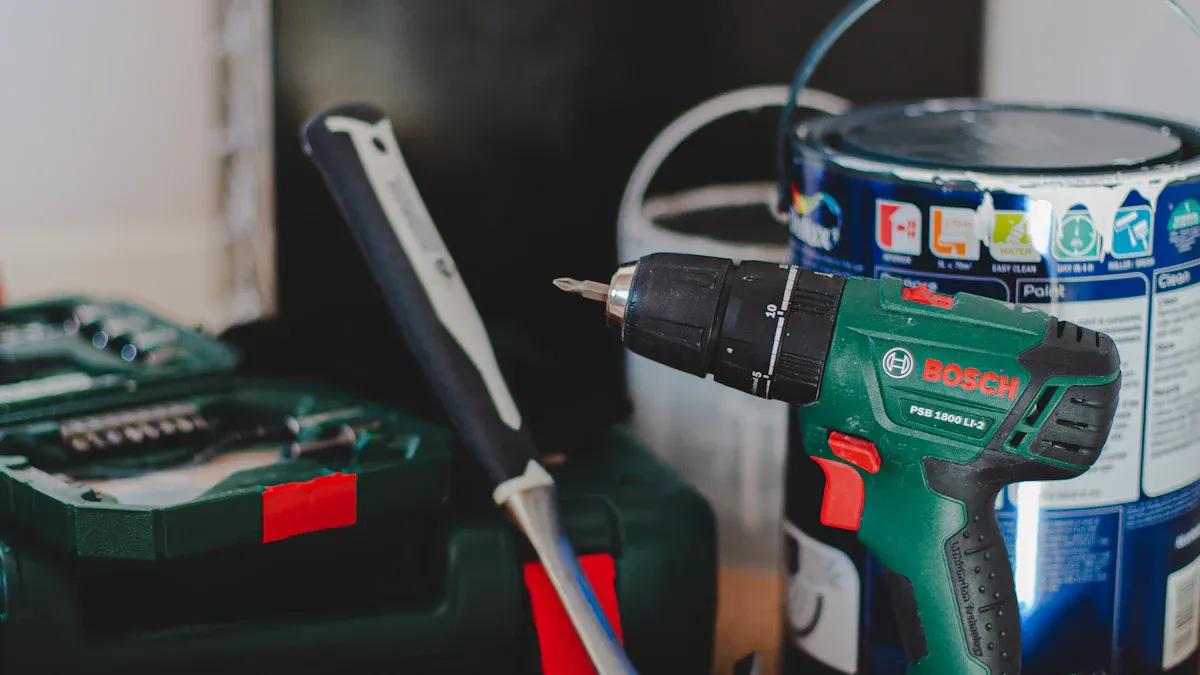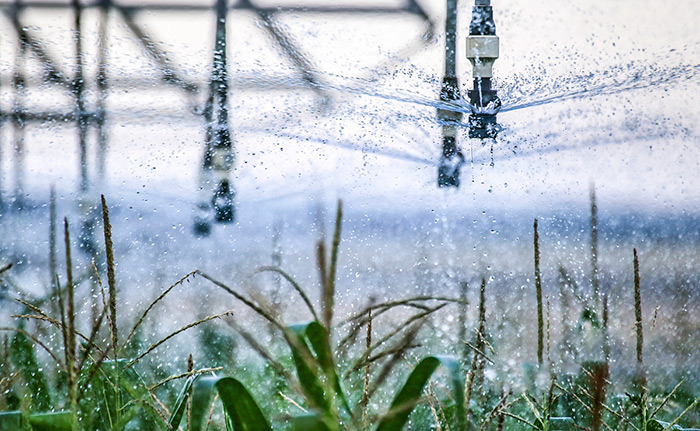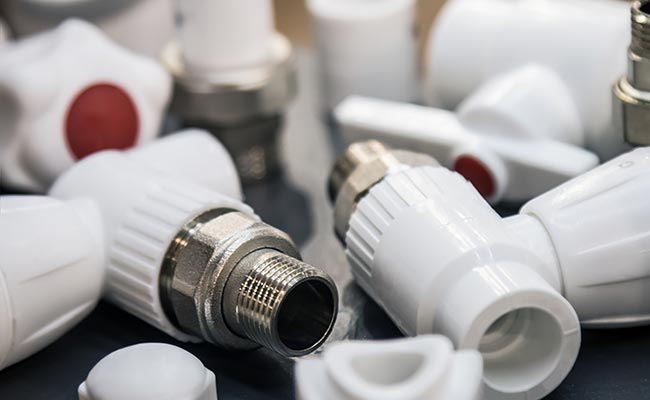Ku bijyanye no gusana amazi, burigihe nshakisha ibikoresho byoroshya akazi kandi neza. Umuyoboro wa PVC ni kimwe mu bikoresho bigaragarira mu kwizerwa no mu bworoherane. Ikora neza mubihe bitandukanye, waba ukosora imirongo yamazi yo murugo, gucunga uburyo bwo kuhira, cyangwa no kugenzura imigendekere yibikoresho bya pisine. Igishushanyo cyacyo cyoroheje no kurwanya ruswa bituma ihitamo guhitamo abanyamwuga ndetse nabakunzi ba DIY. Nasanze ari ingirakamaro cyane mubikorwa byinganda zinganda zinganda no gushiraho aquaponics, aho kuramba no koroshya imikoreshereze ari ngombwa.
Ibyingenzi
- PVC imipira yumupira iroroshye, irakomeye, kandi ntugire ingese, itunganijwe neza.
- Igikoresho cyoroshye cya kimwe cya kane kirashobora kugenzura amazi vuba.
- Birahendutse kandi bifite akamaro kumazu, ubusitani, ninganda.
- Biroroshye gushiraho kandi ukeneye ubwitonzi buke, kubika umwanya kuri buri wese.
- Kubasukura no kubigenzura akenshi bituma bimara igihe kirekire kandi bigakora neza.
Gusobanukirwa Imipira ya PVC
Umuyoboro wa PVC ni iki?
Nkunze gusobanura aPVC umupirankigikoresho cyoroshye ariko gikomeye cyo kugenzura amazi. Nubwoko bwa valve ikozwe cyane cyane muri polyvinyl chloride (PVC), plastike iramba izwiho guhinduka no gukora neza. Impapuro zimwe na zimwe zikoresha CPVC, ikora ubushyuhe bwinshi, bigatuma iba nziza kuri sisitemu y'amazi ashyushye. Iyi mibande igaragaramo umupira wa serefegitura imbere hamwe nu mwobo unyuze hagati. Iyo mpinduye ikiganza, umupira urazunguruka, haba kwemerera amazi gutemba cyangwa kuyihagarika burundu. Igishushanyo kiboneye gituma gikundwa mumishinga yo gukora amazi.
Uburyo PVC Ball Valves ikora muri sisitemu yo gukoresha amazi
Muri sisitemu yo gukoresha amazi, nishingikiriza kumipira ya PVC kugirango ngenzure amazi neza. Uburyo bworoshye. Kimwe cya kane cyumuzingo uhuza umwobo wumupira numuyoboro, ukareka amazi akanyuramo. Kubisubiza inyuma bifunga urujya n'uruza rwose. Igishushanyo cyerekana imikorere yihuse kandi neza. Nakoresheje iyi mibande mubikorwa bitandukanye, kuva mumazi yo murugo kugeza sisitemu yo kuhira. Kubaka kworoheje kwabo no kurwanya ruswa bituma bakora neza kubidukikije aho ibyuma byuma bishobora kunanirwa. Byongeye, biroroshye gushiraho, bintwara igihe n'imbaraga mugihe cyo gusana.
Ibyingenzi byingenzi biranga umupira wa PVC
Iyo mpisemo umupira wa PVC, ndareba ibintu bituma igaragara. Dore incamake yihuse:
| Ikiranga | Ibisobanuro |
|---|---|
| Ikiguzi-Cyiza | PVC imipira yumupira irahendutse cyane ugereranije nicyuma. |
| Igikorwa cyoroshye | Igihembwe-cyizunguruka gihuza umwobo nigitemba, bigatuma abakoresha-nshuti. |
| Kuramba kandi biremereye | PVC irakomeye kandi yoroshye, irwanya ruswa kandi ikomeza kuramba. |
| Kurwanya imiti | Tanga uburyo bwiza bwo kurwanya imiti myinshi nkamazi na acide. |
| Kwiyubaka byoroshye | Umucyo woroshye hamwe nuburyo butandukanye bwo guhuza byoroshye. |
| Kubungabunga bike | Igishushanyo mbonera cyimbere kigabanya kubaka no koroshya kubungabunga. |
| Ingano nini yubunini | Kuboneka mubunini butandukanye kubisabwa bitandukanye. |
Ibiranga bituma umupira wa PVC uhindura ibintu byinshi kandi byizewe kuri sisitemu yo gukoresha amazi. Nasanze bifite akamaro cyane mumishinga aho kuramba no koroshya imikoreshereze nibyingenzi.
Inyungu zo Gukoresha Umupira wa PVC
Kuramba no Kurwanya Ruswa
Iyo nkora kumashanyarazi, burigihe nshyira imbere kuramba.PVC imipiraindashyikirwa muri kano karere. Byakozwe mubikoresho byiza bya UPVC, birwanya ruswa ndetse no mubidukikije bikaze. Bitandukanye n’ibyuma, ntibishobora kwangirika cyangwa gutesha agaciro iyo bihuye n’amazi, imiti, cyangwa ubushyuhe butandukanye. Ibi bituma biba byiza haba murugo no hanze. Nabikoresheje muri gahunda yo kuhira kandi mbona uburyo bihanganira guhangana nigihe kirekire nubushuhe nubutaka. Ubuzima bwabo burebure butuma abasimbura bake, bagatwara igihe n'imbaraga mugihe kirekire.
Ikiguzi-Gukora neza no Guhinduka
Imwe mumpamvu nkunda guhitamo umupira wa PVC ni ubushobozi bwabo. Ugereranije nicyuma gisimburana nkumuringa cyangwa ibyuma bidafite ingese, birasa cyane ningengo yimari. Ibi bituma bahitamo neza kumishinga minini ahokugenzura ibicironi ngombwa.
- Nibyoroshye, bigabanya ibicuruzwa no kohereza.
- Guhindura kwabo kubemerera gukoreshwa mubikorwa bitandukanye, kuva kumazi yo murugo kugeza muri sisitemu yinganda.
Nabonye ko ubushobozi bwabo bwo gukora ubwoko butandukanye bwamazi, harimo amazi n’imiti yoroheje, byongera agaciro kabo. Naba nkora umushinga muto DIY cyangwa akazi gakomeye ko kubaka, iyi valve buri gihe ihaza ibyo nkeneye ntarangije banki.
Kuborohereza kwishyiriraho no gukora
Gushyira imipira ya PVC ni umuyaga. Igishushanyo cyabo cyoroheje kiborohereza kubyitwaramo, ndetse no mumwanya muto. Nabonye ko bazanye amahitamo atandukanye yo guhuza, yoroshya kwinjiza muri sisitemu zihari. Uburyo butaziguye - kimwe cya kane gusa cyo gufungura kugirango ufungure cyangwa ufunge - bituma ukoresha inshuti kubantu bose, utitaye kurwego rwubuhanga.
- Kamere yabo yoroheje igabanya amafaranga yumurimo mugihe cyo kwishyiriraho.
- Igishushanyo cyoroshye kigabanya igihe cyo kwishyiriraho, ninyongera nini kubanyamwuga nkanjye.
Ndashima kandi uburyo imikorere yabo igabanya kwambara no kurira, byemeza imikorere yizewe mugihe. Naba ndimo kuzamura valve ishaje cyangwa gushiraho sisitemu nshya, iyi valve ituma inzira yihuta kandi nta kibazo.
Ibibazo by'amazi byakemuwe na PVC Umupira
Gukosora imyanda no gukumira imyanda
Nakunze guhura nibibazo aho amazi yamenetse atera imyanda idakenewe mugihe cyo gusana amazi.PVC imipirababaye abahindura umukino muribi bihe. Ubushobozi bwabo bwo guhagarika vuba amazi atemba bigabanya kumeneka kandi bikabuza amazi gutemba ahantu udashaka. Hamwe na kimwe cya kane cyoroshye-cyahindutse, nshobora guhita ngenzura imigendekere, nkabika igihe kandi nkagabanya igihombo cyamazi.
Iyindi nyungu nabonye ni kashe ifunze iyi valve itanga. Ikidodo cyemeza ko nta mazi aguma ahantu hashobora gukonja cyangwa kwangiza. Naba nkora kuri sisitemu yo gukoresha urugo cyangwa uburyo bwo kuhira, iyi mibande imfasha kubungabunga amazi neza.
Dore impamvu nishingikiriza kumipira ya PVC kugirango nirinde guta amazi:
- Bemerera guhagarika amazi byihuse kandi neza.
- Igishushanyo cyabo cyemeza imikorere idasohoka.
- Zirinda amazi gukonja mu miyoboro, kugabanya ibyangiritse.
Gucunga Amazi n’umuvuduko
Mubunararibonye bwanjye, gucungaamazi n'umuvudukoni ngombwa mu kubungabunga sisitemu nziza. PVC imipira yumupira mwiza muri kano gace. Nabakoresheje mumazi yo guturamo kugirango mfunge imirongo y'amazi, ifasha kugumana umuvuduko uhoraho. Muri gahunda yo kuhira, bigenga imigendekere y’amazi, bigatuma ibimera byakira amazi akwiye nta guhindagurika.
Iyi mibande nayo igira uruhare runini mubikoresho bya pisine na spa. Bagenzura imigendekere ya filteri na pompe, bagumana umuvuduko uhamye kugirango bakore neza. Ndetse no mubikorwa bito byinganda zinganda, nasanze bifite akamaro ko gucunga neza inzira nko gutunganya amazi. Kuborohereza gukora no gukora bidafite amazi bituma biba ngombwa kugirango bakomeze umuvuduko ukabije wamazi muri sisitemu zitandukanye.
Kworoshya Kubungabunga no Gusana
Mugihe cyo kubungabunga, imipira ya PVC ituma akazi kanjye koroha cyane. Igishushanyo mbonera cyimbere kigabanya imyanda yanduye, yoroshya isuku. Ndashima uburyo nshobora guhindura kashe hamwe nintebe ntahagaritse valve kumuyoboro. Iyi mikorere irankiza umwanya nimbaraga mugihe cyo gusana.
Iyo bimaze gushyirwaho, iyi valve ikenera bike. Mubisanzwe ndabigenzura buri gihe kugirango bisohore cyangwa ibimenyetso byerekana. Gukoresha amavuta ya silicone ashingiye kumavuta akora neza mugihe runaka. Kugumana isuku yimyanda nayo ifasha gukomeza imikorere yabo. Niba udakeneye ibikoresho byihariye, kubungabunga umupira wa PVC biroroshye kandi nta kibazo.
Dore uburyo borohereza kubungabunga:
- Kwiyongera kwanduye kugabanya imbaraga zo gukora isuku.
- Guhindura birashobora gukorwa udakuyeho valve.
- Igenzura risanzwe nubuvuzi bwibanze byemeza imikorere irambye.
Nigute wakoresha imipira ya PVC kumashanyarazi
Guhitamo Iburyo bwiza bwa PVC
Iyo uhitamo aPVC umupirayo gusana amazi, buri gihe ntekereza ibisabwa byihariye byumushinga. Ibintu nkubunini, ubwoko bwihuza, hamwe nicyambu cyicyambu bigira uruhare runini mugukora kugirango valve ihure neza muri sisitemu. Kurugero, intoki zintoki zikora neza kubisanzwe byoroshye, mugihe indangagaciro zikoreshwa ari nziza kuri sisitemu zikoresha. Ndagenzura kandi ubwoko bwihuza-amahitamo nka sima ya sima, umugozi, cyangwa flinged fitinging itanga guhinduka bitewe numuyoboro washyizweho.
Hano hari imbonerahamwe yihuse igufasha guhitamo valve iburyo:
| Ikiranga | Ibisobanuro |
|---|---|
| Ikiguzi-Cyiza | PVC imipira yumupira irahendutse cyane ugereranije nicyuma. |
| Igikorwa cyoroshye | Igihembwe-cyizunguruka gihuza umwobo nigitemba, bigatuma abakoresha-nshuti. |
| Kuramba kandi biremereye | PVC irakomeye kandi irwanya ruswa, itanga kuramba. |
| Kurwanya imiti | Kurwanya neza imiti myinshi yimiti, harimo acide na base. |
| Kwiyubaka byoroshye | Umucyo woroshye hamwe nuburyo butandukanye bwo guhuza byoroshye. |
| Kubungabunga bike | Igishushanyo mbonera cyimbere kigabanya ibyubaka, byoroshe kubungabunga. |
| Ingano nini yubunini | Kuboneka mubunini butandukanye kubisabwa bitandukanye. |
Buri gihe nemeza ko valve ihuye na diameter ya pipe nibisabwa. Guhitamo valve iburyo bikiza igihe kandi birinda ibibazo mugihe cyo kwishyiriraho.
Intambwe ku yindi
Gushyira umupira wa PVC umupira biroroshye. Nkurikiza izi ntambwe kugirango menye neza umutekano kandi udatemba:
- Tegura ibikoresho nibikoresho: Nkusanyije icyuma cya PVC, sima ya solvent, na valve.
- Kata umuyoboro: Nkoresheje icyuma cya PVC, ndakora isuku, igororotse igororotse kumuyoboro aho hazashyirwaho valve.
- Sukura iherezo: Nsukura umuyoboro urangira hamwe na valve ihuza kugirango nkureho imyanda kandi nemeze ubumwe bukomeye.
- Koresha sima ya Solvent: Nkoresha urwego ruto rwa sima ya solvent kumpande zombi hamwe na valve ihuza.
- Ongeraho Agaciro: Nsunika valve kumurongo wumuyoboro, ndemeza guhuza neza.
- Fata mu mwanya: Mfashe valve mumasegonda make kugirango nemere sima gushiraho.
- Emera gukira: Ntegereje igihe cyateganijwe cyo gukira mbere yo kugerageza sisitemu.
Iyi nzira ituma ushyiraho umutekano kandi ikarinda kumeneka. Buri gihe ngenzura inshuro ebyiri guhuza mbere ya sima.
Gusimbuza cyangwa Kuzamura Indangagaciro Zihari
Iyo gusimbuza cyangwa kuzamura valve ishaje hamwe na PVC umupira wumupira, ndibanda kubitegura neza no guhuza. Ubwa mbere, nahagaritse gutanga amazi no gukuraho valve ishaje nkoresheje ibikoresho bikwiye. Noneho, nsukura umuyoboro urangira neza kugirango ndebe neza.
Dore urutonde rwanjye kugirango rusimburwe neza:
- Hitamo ubunini bukwiye kugirango uhuze diameter.
- Koresha ibikoresho bikwiye byo gukata no gusudira-gusudira.
- Huza valve witonze mbere yo gusudira.
- Emera kwaguka kugirango wirinde guhangayikishwa na valve.
Ubugenzuzi busanzwenyuma yo kwishyiriraho ifasha kugumana imikorere ya valve. Nongeye gusiga amavuta kandi nkomeza kugira isuku ya valve kugirango yongere igihe cyayo.
Kubungabunga no Gukemura Ibibazo bya PVC Umupira

Imyitozo yo gufata neza inzira
Buri gihe nshimangira akamaro ko gufata neza buri gihe kugirango umupira wa PVC ukore neza. Kwitaho buri gihe ntabwo byerekana imikorere myiza gusa ahubwo binagura igihe cya valve. Dore bimwe mubikorwa nkurikiza:
- Sukura valve buri gihe ukoresheje ibikoresho byogusukura bihuye kugirango wirinde kwiyongera.
- Kugenzura valve buri gihe kugirango imeneke, ibice, cyangwa ibimenyetso byerekana.
- Koresha amavuta yo kwisiga ashingiye kuri silicone kumutwe no kuruti kugirango ukomeze gukora neza.
- Komeza valve idafite imyanda ishobora kubangamira imikorere yayo.
Izi ntambwe zoroshye zamfasha kwirinda ibibazo bitunguranye no kwemeza ko valve ikora neza mugihe.
Ibibazo Rusange nigisubizo cyabyo
Ndetse hamwe no kubungabunga neza, imipira ya PVC irashobora guhura nibibazo. Nakemuye ibibazo byinshi bisanzwe kandi nabonye uburyo bwiza bwo kubikemura:
- Komera Valve: Kwiyubaka kwimitsi akenshi itera valve gukomera. Nzimya amazi, mfungura kandi mfunge valve inshuro nyinshi, kandi nshyireho amavuta ya silicone. Niba ikomeje gukomera, ndakanda buhoro buhoro umubiri wa valve cyangwa nkoresha umuyoboro wa pipe kugirango ndekure.
- Kubaka imyanda: Umwanda hamwe n imyanda irashobora kubuza imikorere ya valve. Gusukura valve bikemura neza iki kibazo.
- Yashaje-O-Impeta: Igihe kirenze, o-impeta irashobora gushira kubera umuvuduko wamazi. Kubisimbuza bigarura imikorere ya valve.
- Ikibabi cyangiritse: Gushushanya cyangwa kwangirika kuruti bisaba gusimburwa kugirango ukomeze imikorere ikwiye.
Gukemura ibyo bibazo bidatinze byemeza ko valve ikomeza gukora nkuko byari byitezwe.
Inama zo Kwagura Ubuzima bwa PVC Umupira
Kugirango wongere ubuzima bwa PVC umupira wa valve, nkurikiza izi nama:
- Shyiramo valve neza kugirango wirinde guhangayika bishobora gutera kunanirwa imburagihe.
- Kora ubugenzuzi buri gihe kugirango umenye kandi ukemure ibibazo bishobora kuvuka hakiri kare.
- Sukura valve buri gihe kugirango wirinde imyanda.
- Koresha amavuta ashingiye kuri silicone kugirango ukomeze ikiganza nigiti kigenda neza.
Mugushira mubikorwa mubikorwa byanjye, ndemeza ko valve ikomeza kwizerwa kandi ikora neza mumyaka.
PVC imipirabahinduye uburyo niyegereza gusana amazi. Kuramba kwabo, gukora neza, no koroshya imikoreshereze bituma baba igikoresho cyingirakamaro kubanyamwuga ndetse nabakunzi ba DIY. Mugusobanukirwa inyungu zabo no gukurikiza uburyo bukwiye bwo kubungabunga, Nabonye uburyo batanga imikorere yigihe kirekire kandi yizewe.
Ningbo Pntek Technology Co., Ltd igaragara nkumuntu wizewe utanga ubuziranenge bwa PVC umupira mwiza. Ubwitange bwabo mukugerageza gukomeye, guhitamo ibikoresho neza, no gushushanya udushya bituma buri valve yujuje ubuziranenge bwinganda. Haba kumashanyarazi yo murugo cyangwa sisitemu yinganda, ibicuruzwa byabo bihora bitanga ibisubizo bidasanzwe.
Ibibazo
Niki gituma imipira ya PVC iruta icyuma?
NkundaPVC imipirakuberako barwanya ruswa, ipima bike, kandi igura munsi yicyuma. Bakora kandi neza mubidukikije aho ibyuma byuma bishobora kunanirwa, nkibice bifite ubuhehere bwinshi cyangwa imiti. Kuramba kwabo no koroshya imikoreshereze bituma bahitamo kwizewe kuri sisitemu nyinshi.
Imipira yumupira wa PVC irashobora gukoresha amazi ashyushye?
Nibyo, ariko ubwoko bumwe gusa. Ndasaba gukoresha imipira ya CPVC ya sisitemu y'amazi ashyushye kuva ikora ubushyuhe bwinshi. Indangagaciro za PVC zikora neza mugukoresha amazi akonje. Buri gihe ugenzure igipimo cyubushyuhe bwa valve mbere yo kwishyiriraho kugirango urebe ko cyujuje ibisabwa na sisitemu.
Nabwirwa n'iki ingano ya PVC umupira wo guhitamo?
Buri gihe mpuza ingano ya valve na diameter ya pipe muri sisitemu. Kurugero, niba umuyoboro ari santimetero 1, mpitamo valve ya santimetero 1. Ibi byemeza neza kandi birinda kumeneka. Gupima umuyoboro neza mbere yo kugura valve ni ngombwa.
Ese imipira ya PVC ifite umutekano mumazi yo kunywa?
Yego. Nizera imipira ya PVC ya sisitemu y'amazi meza kuko ntabwo ari uburozi kandi nta miti yangiza. Zujuje ubuziranenge bwumutekano wo gukoresha amazi yo kunywa, bigatuma bahitamo umutekano kandi wangiza ibidukikije kumiryango no mubucuruzi.
Umupira wumupira wa PVC umara igihe kingana iki?
Hamwe nubwitonzi bukwiye, imipira ya PVC irashobora kumara imyaka irenga 50. Ndasaba kubungabunga buri gihe, nko gukora isuku no kugenzura imyambarire, kugirango bongere ubuzima bwabo. Kurwanya kwangirika kwabo hamwe nubwubatsi burambye bituma bakora igisubizo kirekire kuri sisitemu yo gukoresha amazi.
Igihe cyo kohereza: Gashyantare-26-2025









